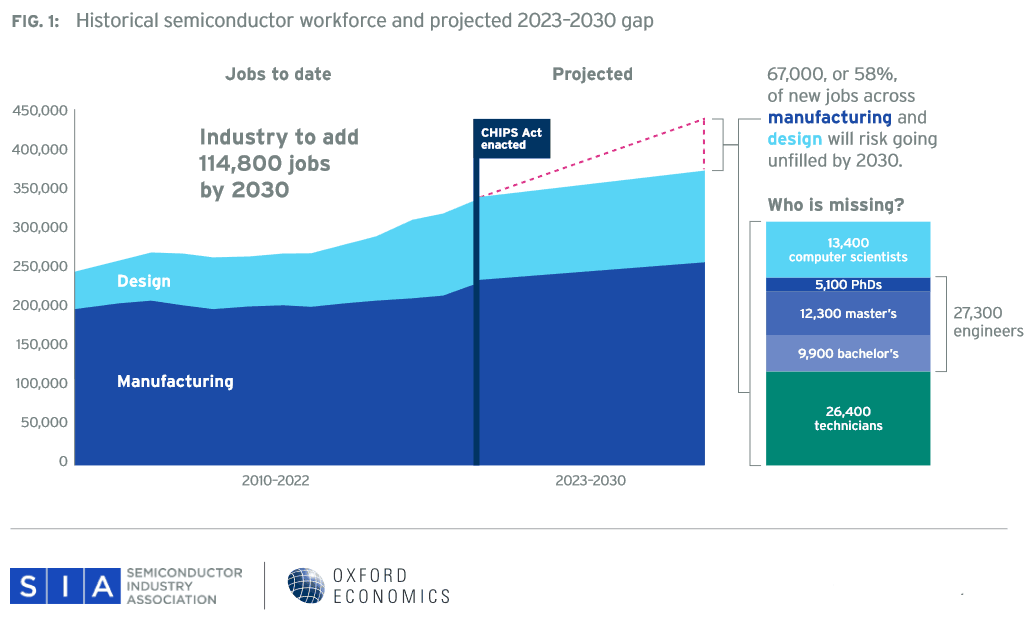
In a report published by the Semiconductor Industry Association (SIA) today, it was estimated that there will be a shortfall of 67,000 workers in the industry, by 2030. Key roles that will be difficult for US-based chipmakers to fill include technicians, computer scientists, engineers. Thus, SIA has devised a three point action plan to address the talent gap.
The US has big ambitions for its domestic semiconductor industry, even going so far as encouraging foreign investment from the likes of Samsung and TSMC. The enactment of the landmark CHIPS and Science Act of 2022 means that the US will be responsible for a significant share of global semiconductor output, going forward. However, the problems we are already seeing, regarding the lack of qualified and interested staff, look set to get worse.

SIA expects the semiconductor industry’s workforce will grow by nearly 115,000 jobs by 2030. That means the total workforce of roughly 345,000 people today should expand to 460,000 by the end of the decade to keep pace. The labor market is going to struggle to keep up, though. Making clear the core issue, SIA says that current degree completion rates mean that roughly 67,000 - or 58% of projected new jobs - will go unfilled.
This insufficient qualified labor problem isn't isolated to the semiconductor industry in the US. Looking at the wider jobs market for a moment, SIA says that by the end of the decade an estimated 3.85 million additional US jobs requiring proficiency in technical fields will be created. Of these about 1.4 million are at risk of being unfilled. These are huge numbers, and for industries like semiconductors, which have been judged to be one of strategic importance to the country, the issue is most concerning.

So, what is to be done to address the gap between the number of skilled chip industry workers expected to be needed, and the number that are expected to become available? SIA has a three point plan, and we have quoted the bullet points verbatim, below.
- Strengthen support for regional partnerships and programs aimed at growing the pipeline for skilled technicians for semiconductor manufacturing and other advanced manufacturing sectors.
- Grow the domestic STEM pipeline for engineers and computer scientists vital to the semiconductor industry and other sectors that are critical to the future economy.
- Retain and attract more international advanced degree students within the US economy.
Hopefully, the above will be heeded by national and local government, and key industry players, and prove to be enough to help fill the talent gap - or if not it at least make things more manageable.
Some of the news coming out of TSMC's big venture into the US, propelled by the CHIPS Act, isn't very encouraging for those who might be interested in working in the industry. For example, in June, we reported on TSMC chairman Mark Liu saying workers in the industry should expect long shifts, and have their passion for the industry tested by the work environment. This came after news that TSMC was struggling to hire local workers in Arizona, so was seeking more Taiwanese migrants to fill the gaps.







